        |
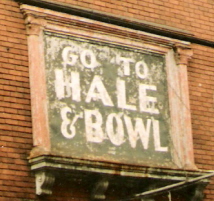
Hale Ave.
|
||
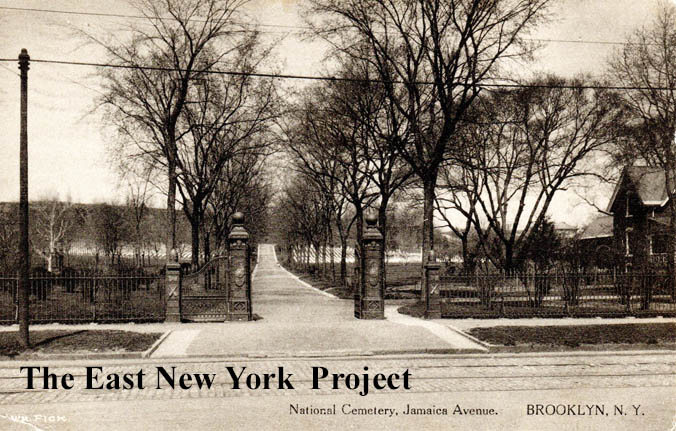 |
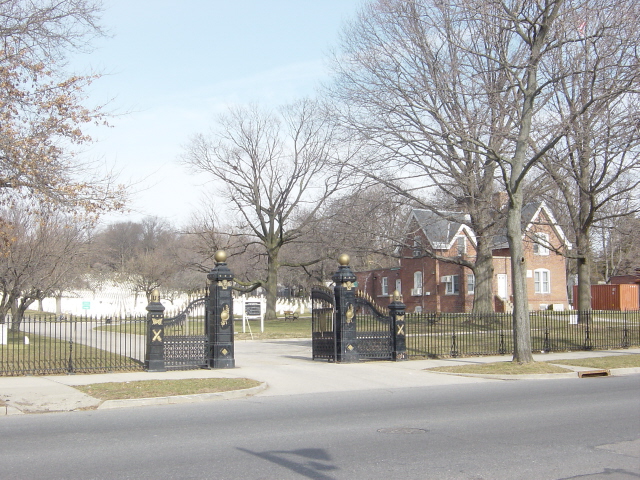 |
National Cemetery, Jamaica Avenue Dated: 1910 Maker:Wm. Fick Status: Own (RG) On the north side of Jamaica Avenue, National Cemetery lies east of Highland Park. The entrance is across from Hale Ave. Originally established as "Union Grounds" within Cypress Hills Cemetery, in July of 1862 President Abraham Lincoln signed the act creating a national cemetery system. The grounds, along with additional land, were acquired by the U.S. government in 1870. It is officially Cypress Hills National Cemetery, the only National Cemetery within New York City. their website can be found here.(Note they switched this to a PDF link.) |
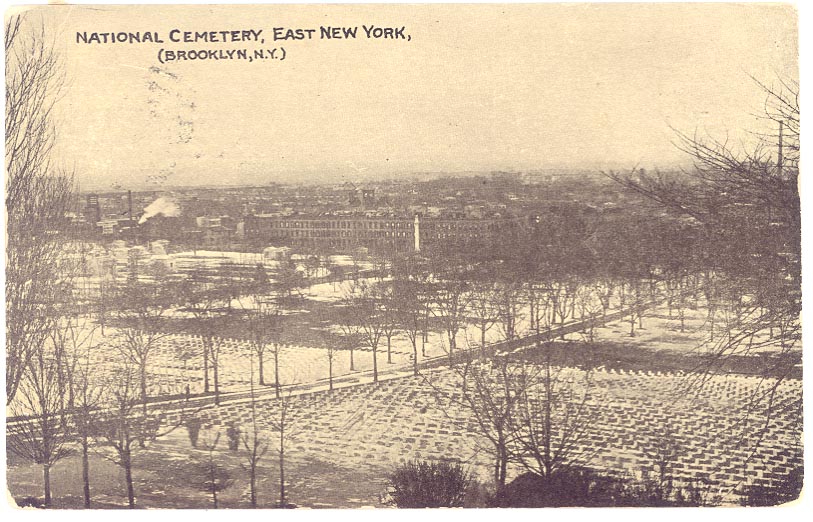 |
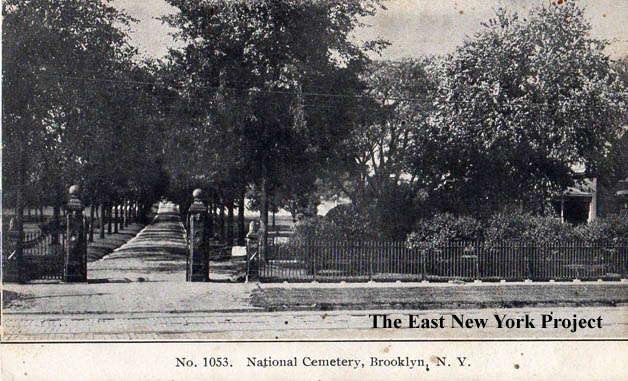 |
National Cemetery, East New York Dated: Unk Maker:Unk Status: Own (BG) No. 1053 National Cemetery, Brooklyn Maker:Lowe&Thompson Dated: 1908 Status: Own (RG) Two more post card views, including a great aerial shot looking south towards the entrance. Confederate soldiers were also buried here, having died in hospitals or prisons up north. Confederate headstones have a pointed top, while Union headstones are rounded. |
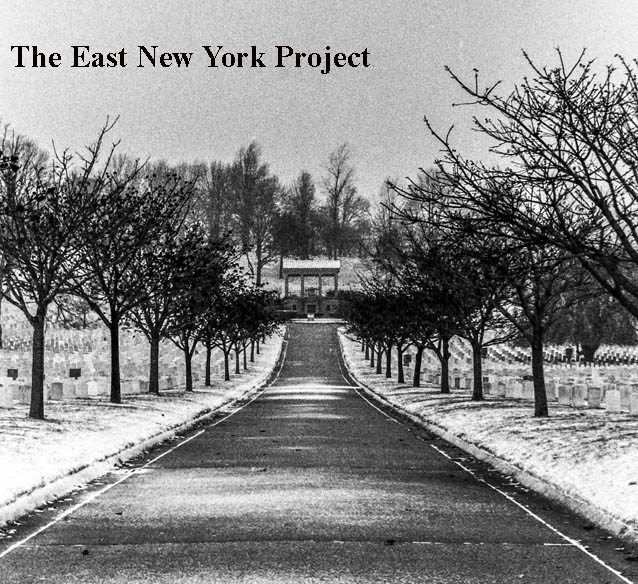 |
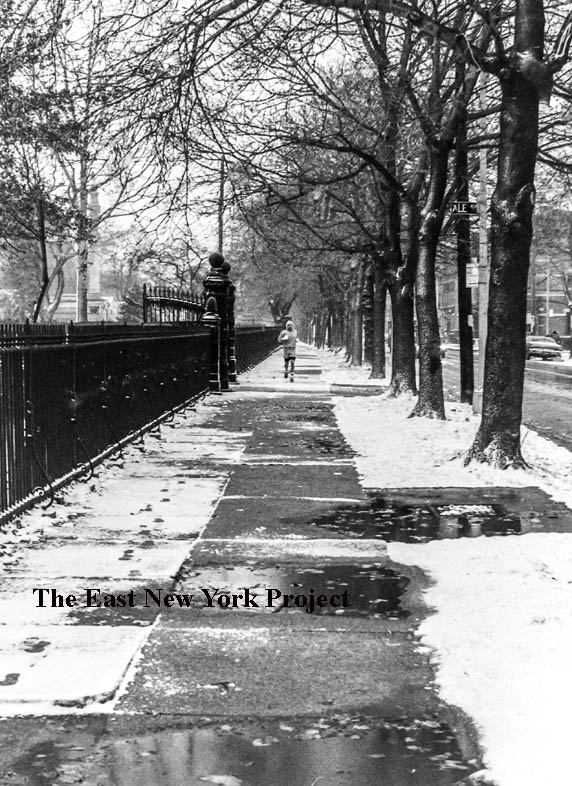 |
National Cemetery, Jamaica and Hale Avenues Two cool photographs taken by Peter Stango in January 1978. |
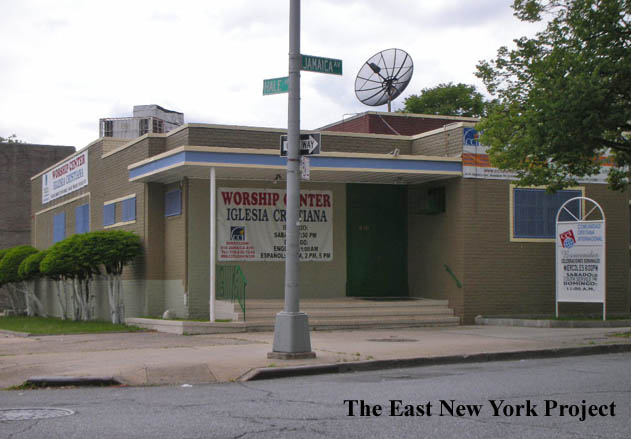 |
 |
Knights of Columbus, Hale and Jamaica Peter Stango reminded me that the Knights of Columbus Long Island Council 197 resided on the southwest corner of Hale and Jamaica Avenues. That set me off on a frenzy of research. The council dates to 1896, and for a long time was headquartered at 231 Jamaica Avenue (by Van Siclen) before it was destroyed by fire in October 1951. This building was constructed by the Knights of Columbus in 1954, and was sold in 1993 to a Spanish Pentecostal group. Naturally I needed to find out what was there before. |
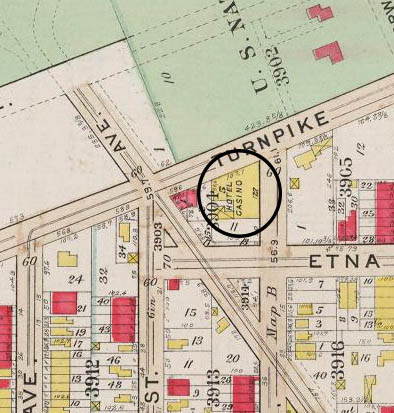 |
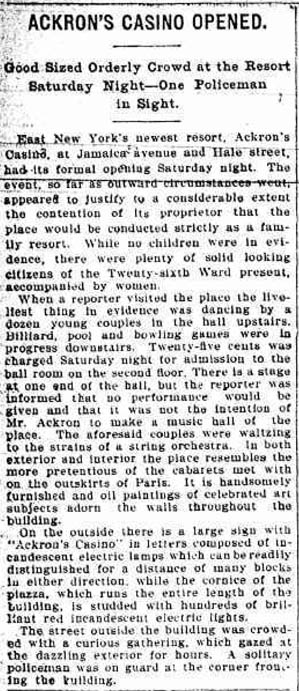 |
I dug into the old insurance maps and identified a hotel and casino (entertainment hall, not gambling house)operaetd by Henry Meyer, opened in 1900. Charles E. Ackron, would soon take it over.. Ackron owned the more famous Tivoli in Manhattan but often ran afoul of the law (and the temperance movement). I found an unintentionally humorous article from 1902 when Ackron clashed with the pastor of St. Peter's. It appears St. Peter's was hosting a dinner in his establishment and the reverend was shocked when Ackron provided music for the purpose of dancing...apparently inappropriate for a church group. Upon further research into Ackron, I'm nominating him for "East New York's first mobster". Check out his rap sheet under the history button.  |
 |
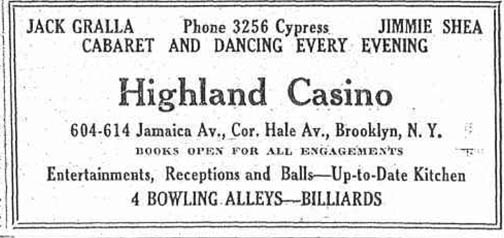 |
Sometime around 1906 it becomes Beck's Casino, and by 1914 it was known as the Highland Casino. These ads appeared in 1915. Jimmie Shea was a nightclub act, and I found mentions of him touring the country between 1917-1921. |
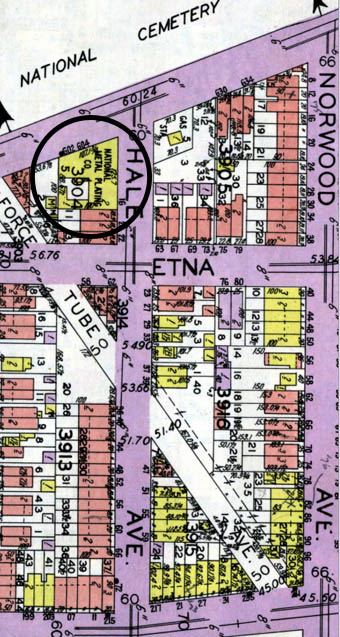 |
The building continued to change hands and use; Anthony Messina found an article that it was leased to the Hart Waterproof Manufacturing Co. during WWI for "government work." The 1929 maps reveal the location was then occupied by the National Plating Company. I could not find much information on them, there is a CO for 1927. It appears to be the same building as the hotel, since it is woodframe and the same footprint of the hotel. We need to find the tax photo for this location. | |
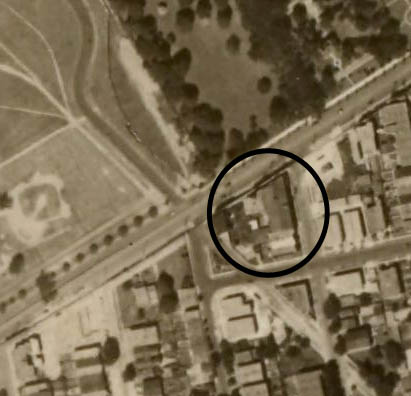 |
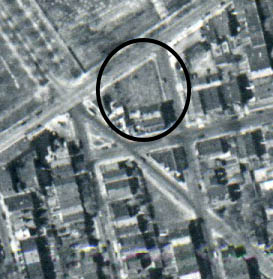 |
Aerial views On the left is an aerial view from 1924, showing the rooftops of the hotel which I believe becomes the factory in 1927. I have not found any history on the company; the aerial view on the right in 1951 shows the lot to be empty, and we know the Knights of Columbus bought the property from the city so I am guessing the company went bust and the city took the land. |
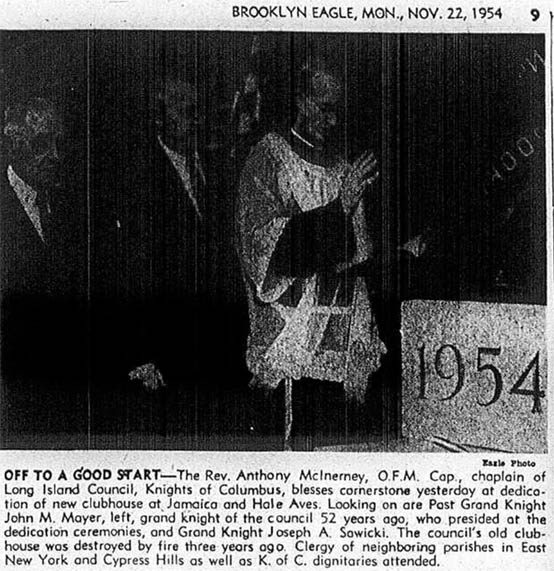 |
Cornerstone dedication, 1954 It's not much of a picture, but here's the Brooklyn Eagle story about the cornerstone dedication. |
|
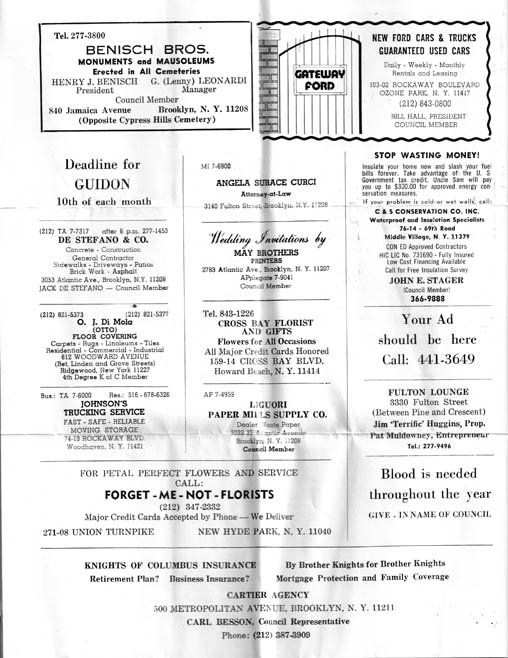 |
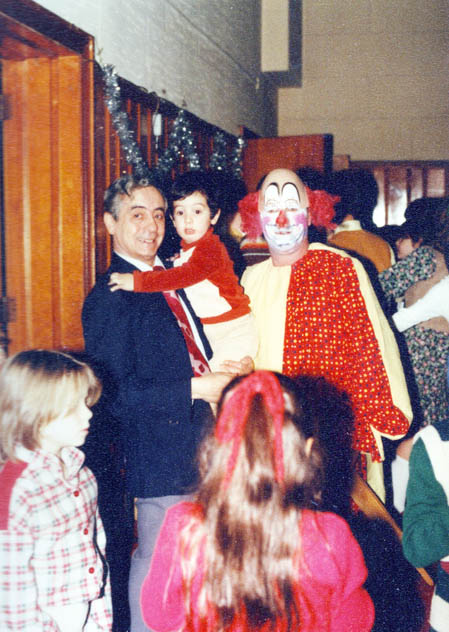 |
Guidon newsletter, Christmas party 1978 Thanks again to Peter for reminding us of the club and supplying us with some material. On the left is the back of a 1981 newsletter with some local ads, and on the right an interior view from a 1978 Christmas party. That's Peter's father on the left. |
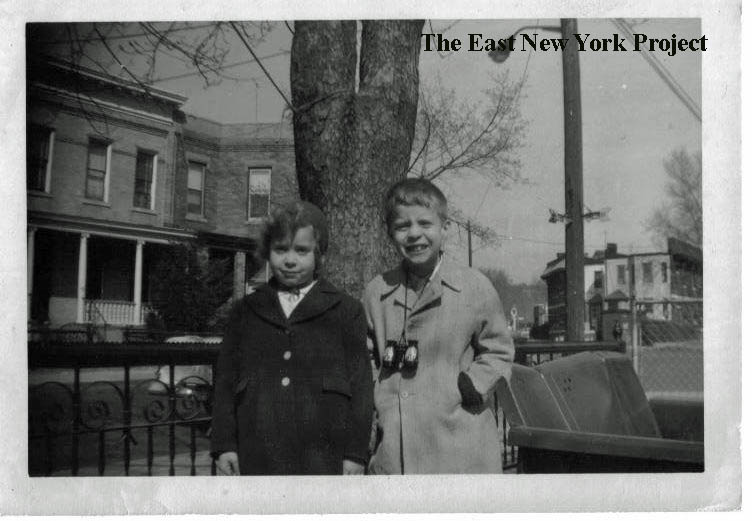 |
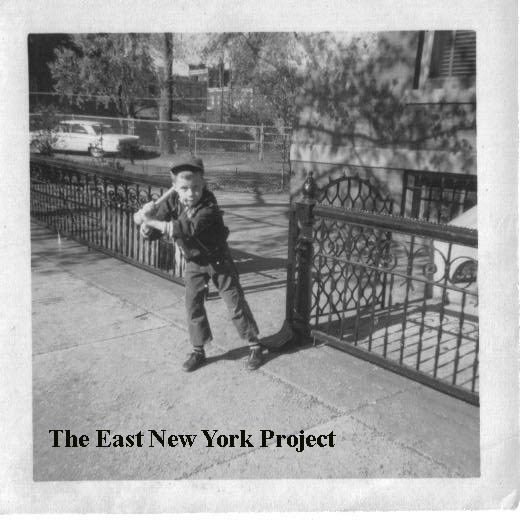 |
45 Hale, circa 1960 Wes Miller, a childhood friend of my older brother Bruce, lived at 45 Hale, on one of those wedge blocks created by Force Tube Ave cutting diagonally north-south. The first photo he is with his sister Esther, a view north away from the house. The second shot , towards the house, shows Force Tube in the background. 45 Hale was the parsonage for St. Peter's before Wes' family bought it. Wes recalls there was stained glass windows in the vestibule at that time. |
 |
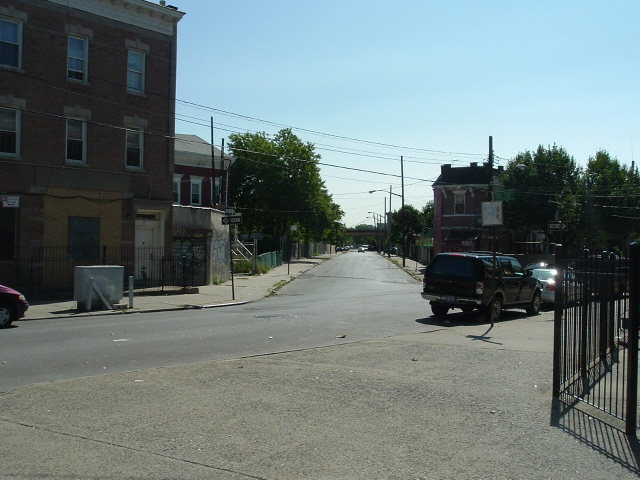 |
45 Hale, 1959 This 1959 photo is from the back yard, showing Force Tube,known by Wes as the 'Back Street'.Wes recalls that Force Tube had no sidewalks, making the wide street ideal for stickball and football games. The outfield for stickball however, extended into the Ridgewood/Force Tube/Norwood intersection adding an extra challenge for the outfielders. The 2005 photo, courtesy of Neil Sullivan, is of Force Tube by Norwood (thanks Tim). |
 |
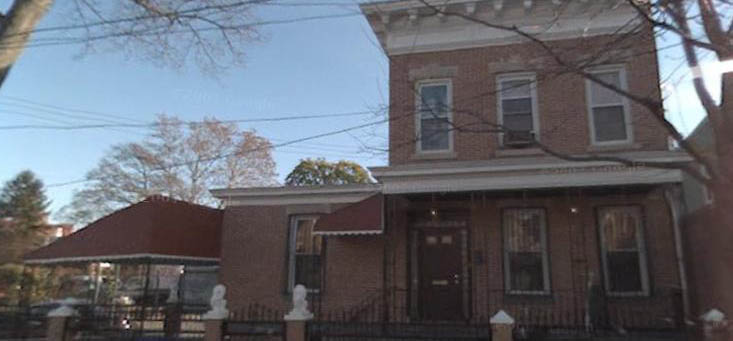 |
45 Hale, 1925 This 1925 picture comes from a St. Peter's Anniversary program from Larry Rickert's St. Peter's Website. It confirms the house was built in 1911 as the parsonage. On the right, a 2008 view from Google Maps showing the house has kept most of the architectural detail except for the original porch posts. |
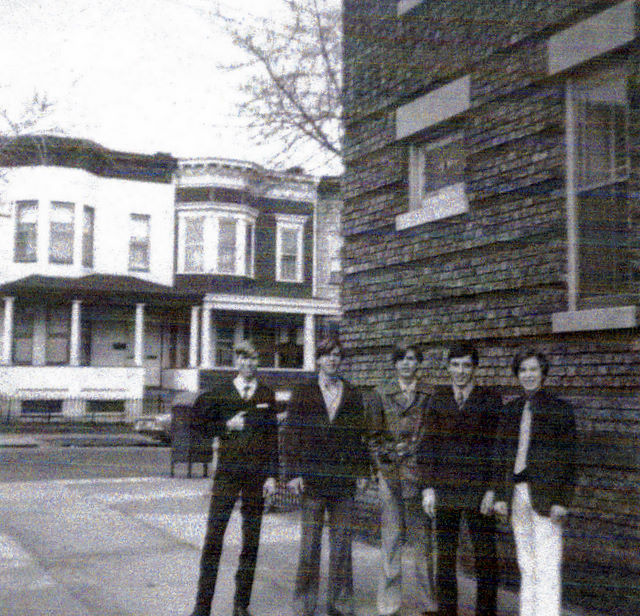 |
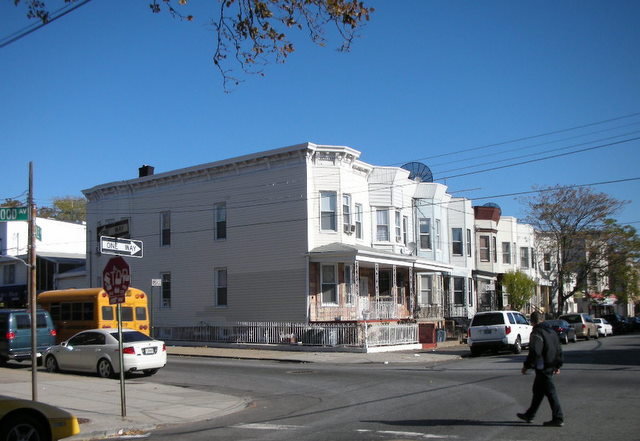 |
Hale and Ridgewood Thanks to Eugene (via Wes Miller) who notified me that this shot was misidentified as Highland Place; this is a view north up Hale across Ridgewood Ave. JoAnn LaForte sent over this pic of the Blessed Sacrament gang in 1967 with the label , "Eugene's house". Left to right: Raymond Thoden, Rick Abbene, Eugene Abbene, Louis Feminella (sp)?, Jimmy Perini. On the right, the northeast corner in 2007. |
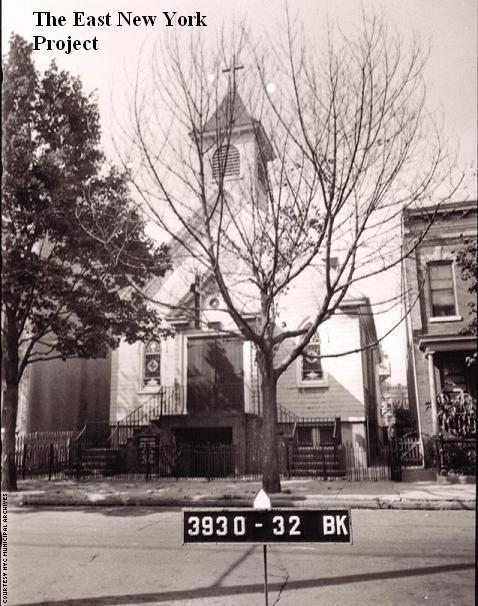 |
 |
St. Peter's 94 Hale Block:3930 Lot: 32 Larry Rickert, a former ENY resident who has returned to the neighborhood, hosts a webpage for St. Peter's. That site can be found here. Thanks to Tim O'Reilly for the 1941 tax photo on the left. According to the 1937 booklet provided by Joann the entrance was rebuilt in 1936 and the lighted cross on the steeple was added as well. The church was subsequently expanded to the rear in 1967. |
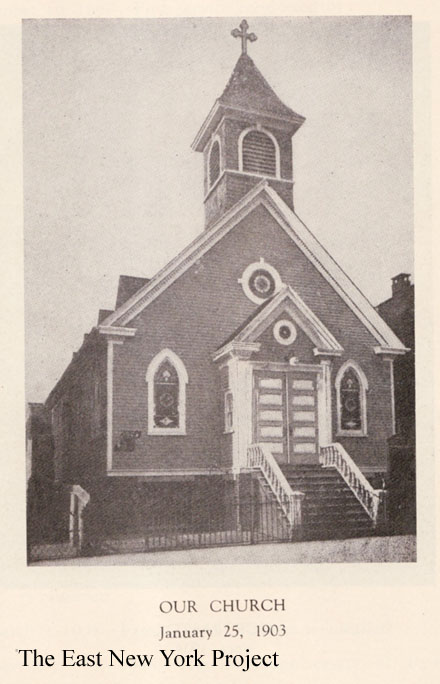 |
 |
St. Peter's Joann Montgomery supplied us with a bunch of material on St. Peter's, filling in some historical gaps for us. On the left a picture commemorating the dedication of the church on January 25, 1903. The congregation was founded in 1897; it consisted of people who were driven out of Williamsburgh by the Williamsburgh Bridge project. |
 |
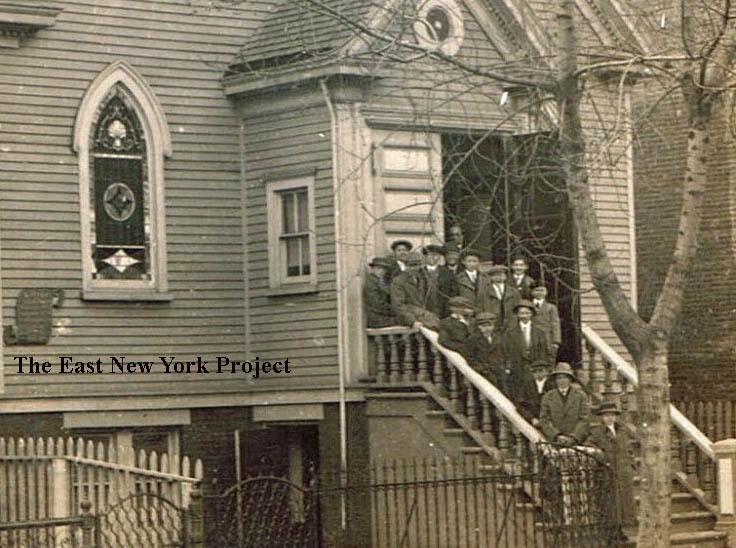 |
St. Peter's Maker:RPPC Year:1914 Status: Own(RG) a rare RPPC (real picture post card)from 1914; I provided a closeup view of the group. |
 |
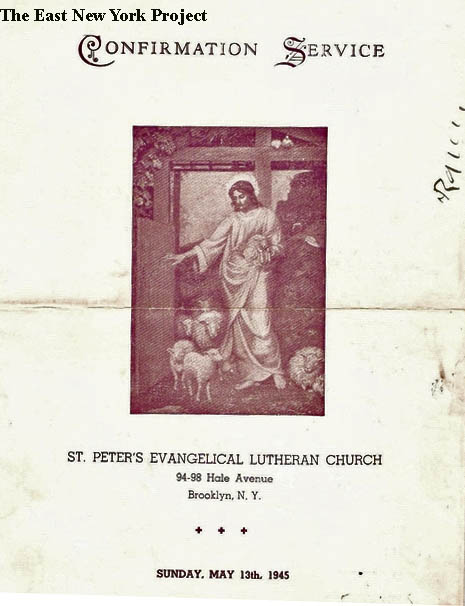 |
St. Peter's Confirmation May 13, 1945 Joann Montgomery sent in this 1945 picture of her mother's confirmation class in front of the altar. Her mother Ellen (Scholz) Signorello is first row ,second from the right. The girl standing behind the Minister on the right is Eleanore (Junge) Petrillo. Ironically, major site contributor Tim O'Reilly confirmed his mother is in the picture; he supplies the cover of the program and IDs Pastor Brunn (the elder) and Pastor Meyer as well as the date. |
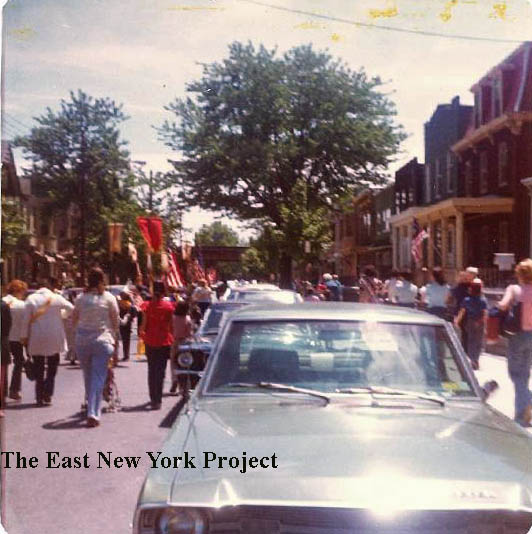 |
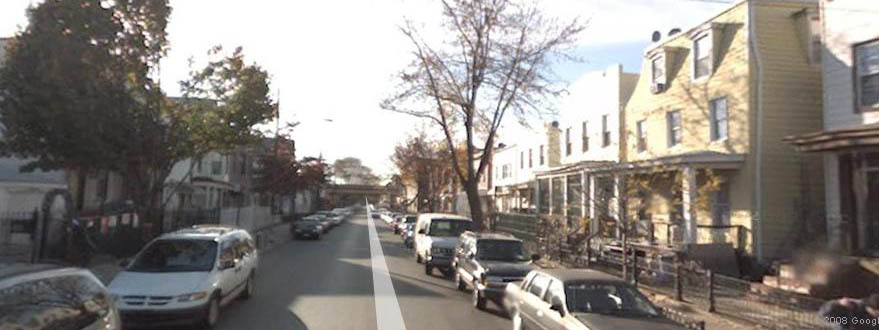 |
Parade, circa 1974 Denise Milo sent in this parade picture taken just south of St. Peter's, giving us view south down Hale towards Fulton Street. I used Google Maps to capture the same view today on the right. The house on the right with the mansard roof structure is pretty unusual for the neighborhood. |
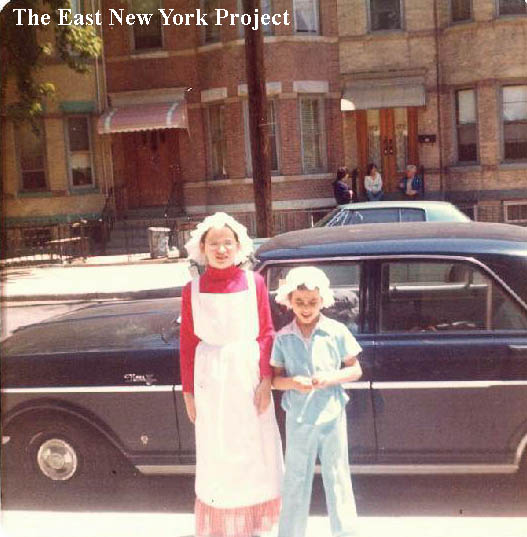 |
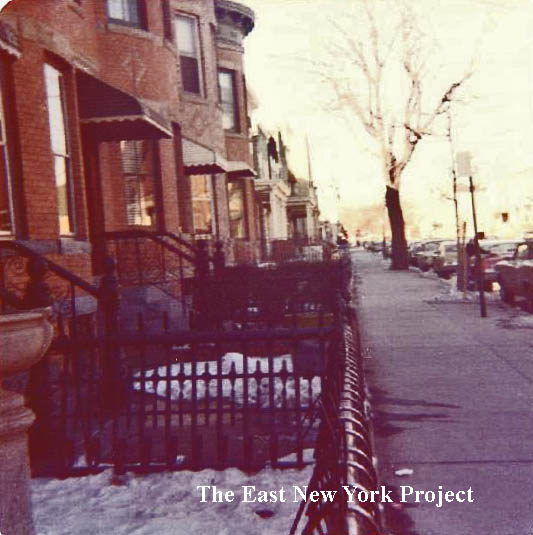 |
128 Hale, 1970s Denise also tried to send over this photo without an explanation- subsequently she explained she was playing Betsy Ross in a parade float for the St. Peter's Cub Scouts. That's Toni Marie Todisco to the right. On the right, another mid 70s shot of the left side of the block looking north from 128 Hale Avenue. |
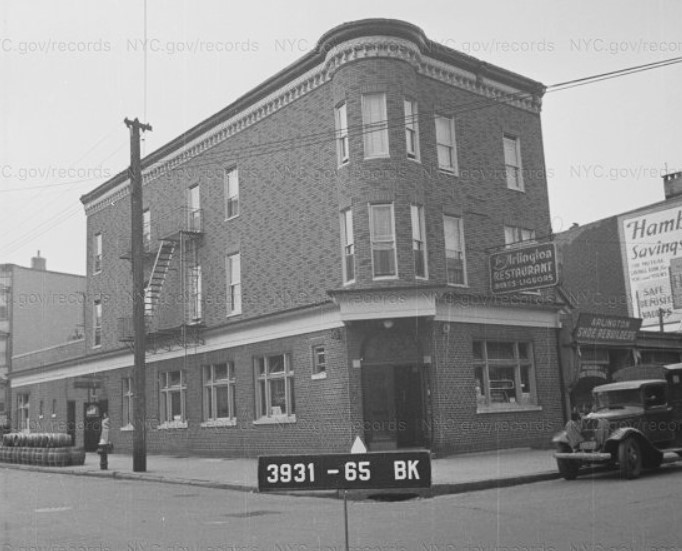 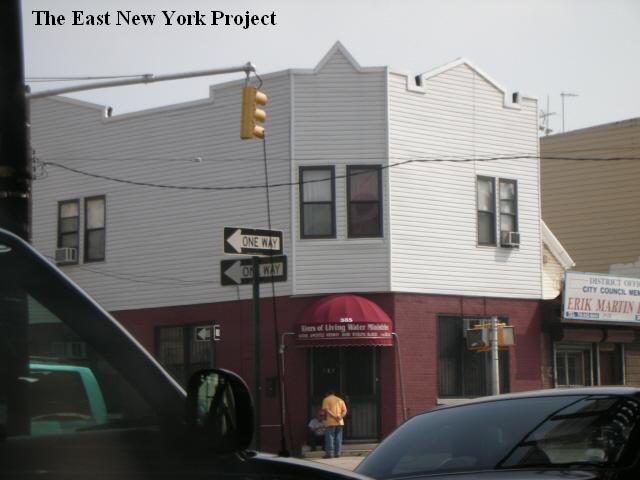 |
Arlington Restaurant, 1941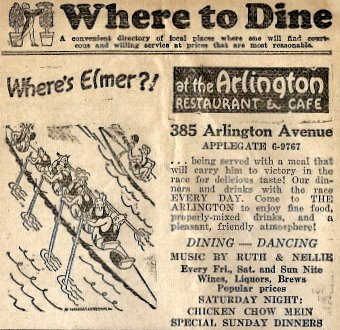 This building, on the northeast corner of Hale and Arlington dates to 1912. In 1936 a CO is issued for the restaurant including a 10 x 15 dancing floor. The ad on the right is from 1938. Judy Close adds; "I recall from the 1950s-1970s, that bldg was called The Arlington, and it was a bar with a pool table in the back. In the '70s, the owner was Mary Keaveny, of the Keaveny family who used to live on Linwood Street back in the 1950s (there was a brother Johnny and a lot of other sibs). Don't know if it lasted into the 1980s as a bar, but it was a bar simply known as The Arlington for a long time. My brother tells me that the mob put the arm on Mary to install phones so it could be a convenient bookie operation, just like they wanted to do at The Logan Pool Hall years before." The Arlington Restaurant Corp sold the building in 1971 and became the home of the "Rivers of Living Water Ministries". It appears to be a 2 story building without the curved front on the corner. Does anyone know the story of this building? |
|
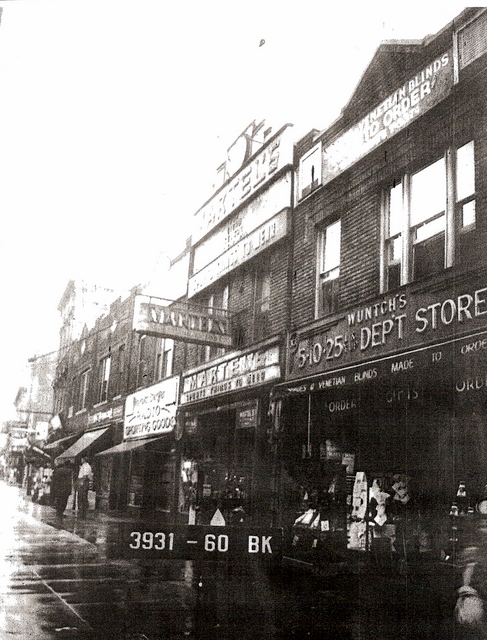 |
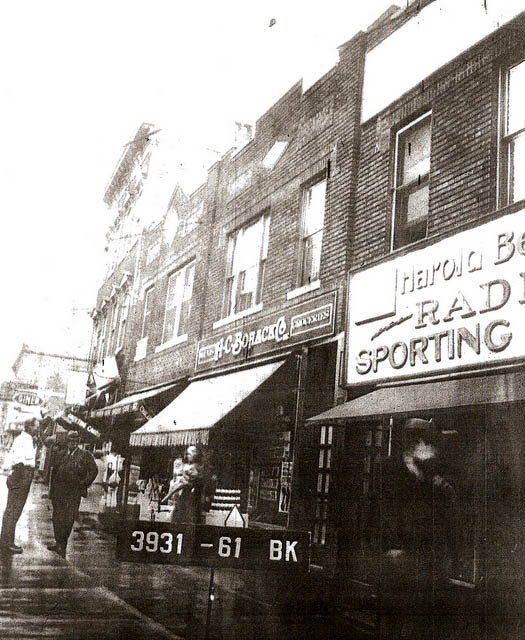 |
Arlington and Fulton come together at Hale, so the block between Hale and Norwood actually faces the El though it is set back at an angle. These 1941 tax photos give a sense of the busy commercial strip it once was. |
 |
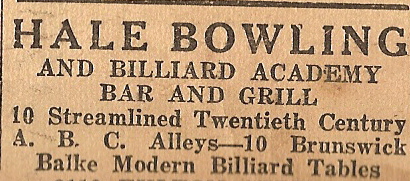 |
Hale Lanes A neighborhood mainstay, everyone recalls the famous and somewhat risque "Go to Hale and Bowl" sign. Danny Blanda came through with a picture that he had the presence of mind to take in 1984 after the lanes closed and he realized it would soon be gone. We are still trying to fill in a lot of history and find better pictures so keep them coming! On the right is an ad from the local Record in 1938. |
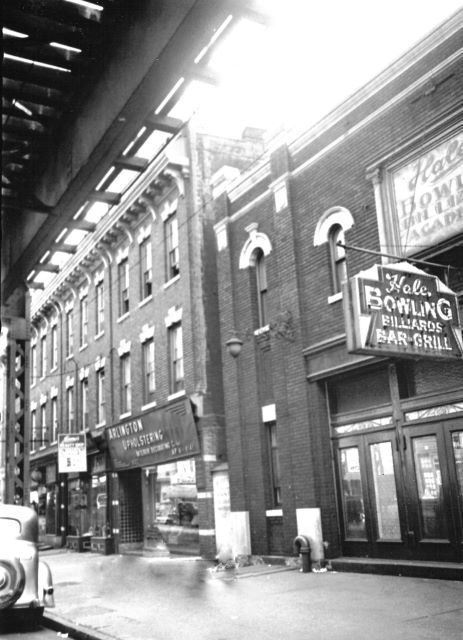 |
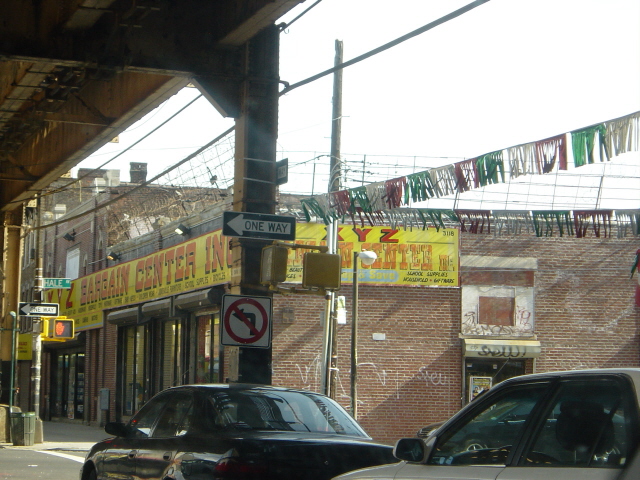 |
Hale Lanes On the left is a 1940 tax photo. This structure is issued a CO in 1926, not for a bowling alley but a movie theater! Cinema buff Warren Harris confirmed to me that a Norwood Theater operated in this location (3118 Fulton) from 1926 to 1932. At some point the building expands to occupy the entire corner and becomes a bowling alley. The shot on the right is from 2005. |
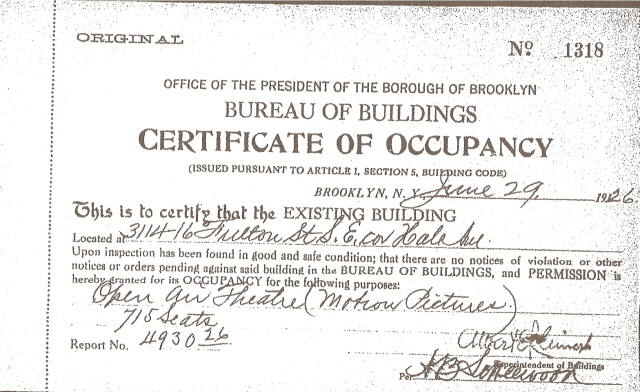 |
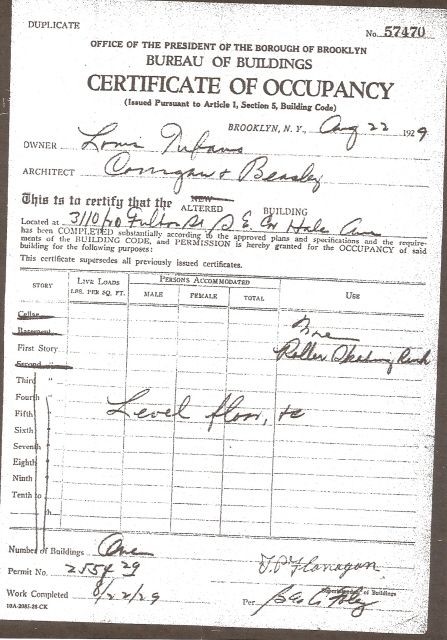 |
Hale Lanes CO, corner Hale and Fulton Now the corner lot is undeveloped in 1926. When I researched the COs, I discovered they were issued a CO in 1926 for an "open-air" theater! In 1929, a CO is issued for a skating rink at the location, listing the owner as Louis Tufano. It is not until 1944 that we see a CO for the corner as a bowling alley. (Note in the 1938 it only advertises 10 lanes). |
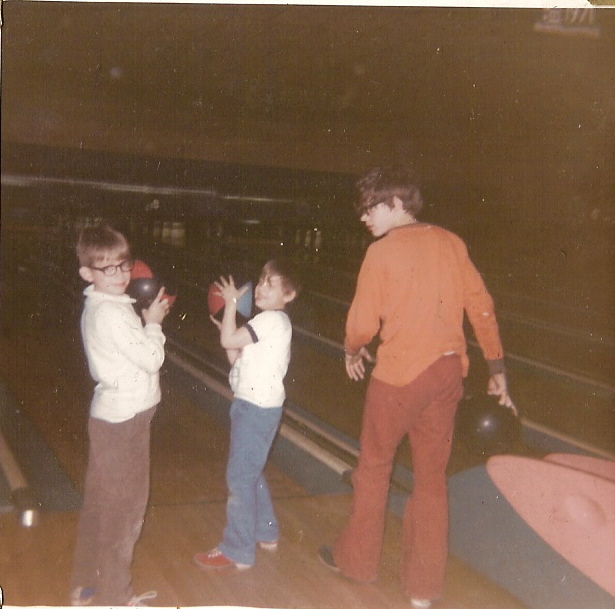 |
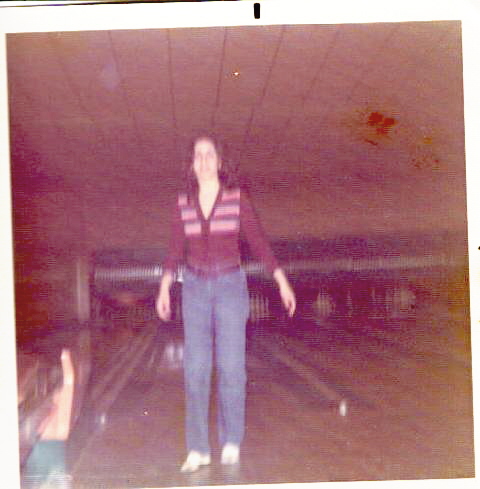 |
Hale Lanes Ironically both JoAnn LaForte Ambrosio and I both dug into the photo albums and came up with dark fuzzy interior shots of Hale Lanes only one year apart. On the left is my photo from 1971 and on the right is JoAnn herself in a 1972 shot. |
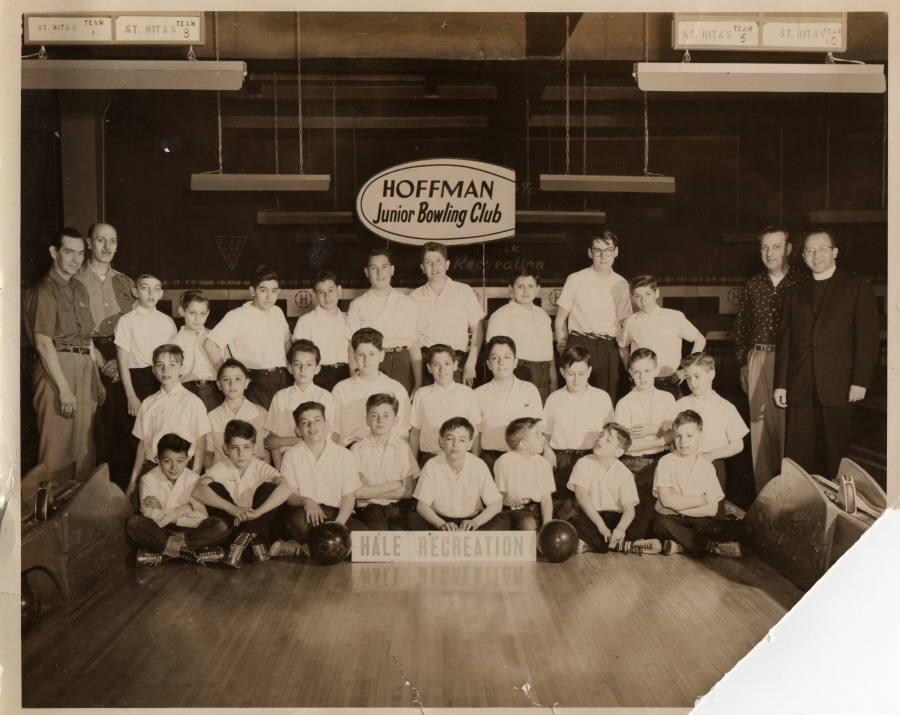 |
Hale Lanes 1955,1958 Pat Annuziata sent in this image which also appears on the St. Rita's page. The Hoffman Club bowled at Hales Lanes on Saturday mornings. Ron Bogart (front row, second from left) sent in the 1958 team picture and IDs in the front row Al (third from left) and Vince (5th from left) Salvati. |
|
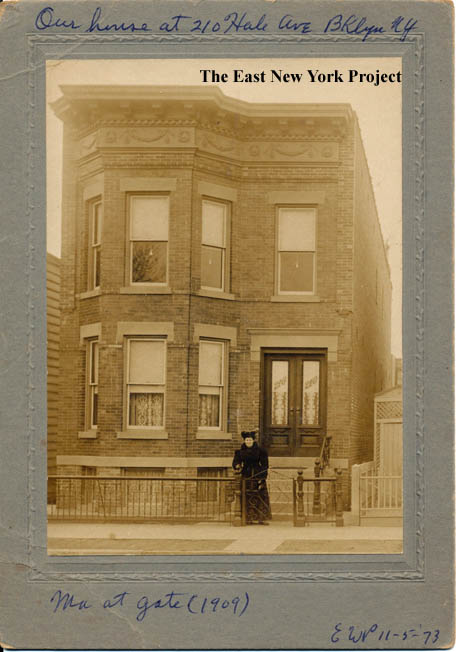 |
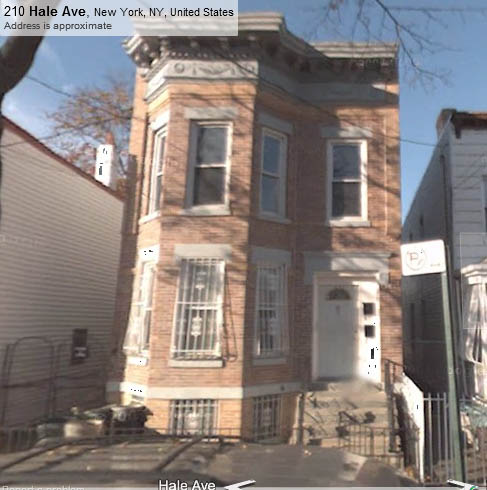 |
210 Hale Avenue, 1909 This comes courtesy of Brian Merlis. I checked the 1910 census for him and confirmed the woman in the photo is Freida Poppke. They were a German family, her husband Emil owned a butcher shop and they had 3 children. What I found odd was that the house is constructed as a rowhouse, yet it is detached on both sides. On the right, the house in 2010, which is near Atlantic Avenue. |
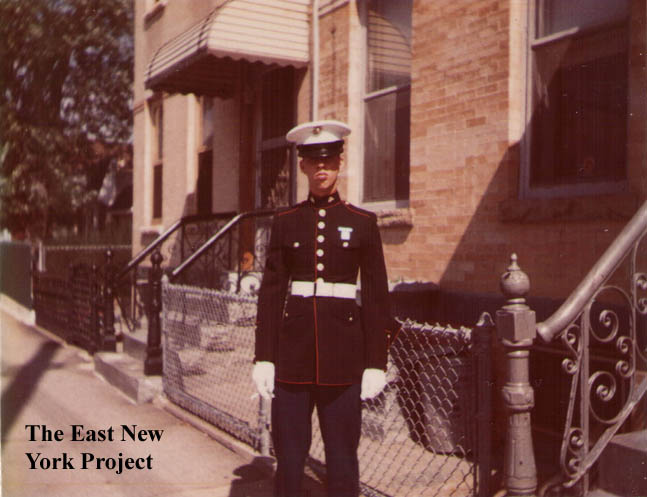 |
221 Hale Avenue, 1967 Charlie O'Berry sent this shot of himself home on leave in front of 221 Hale Avenue in 1967. |
|